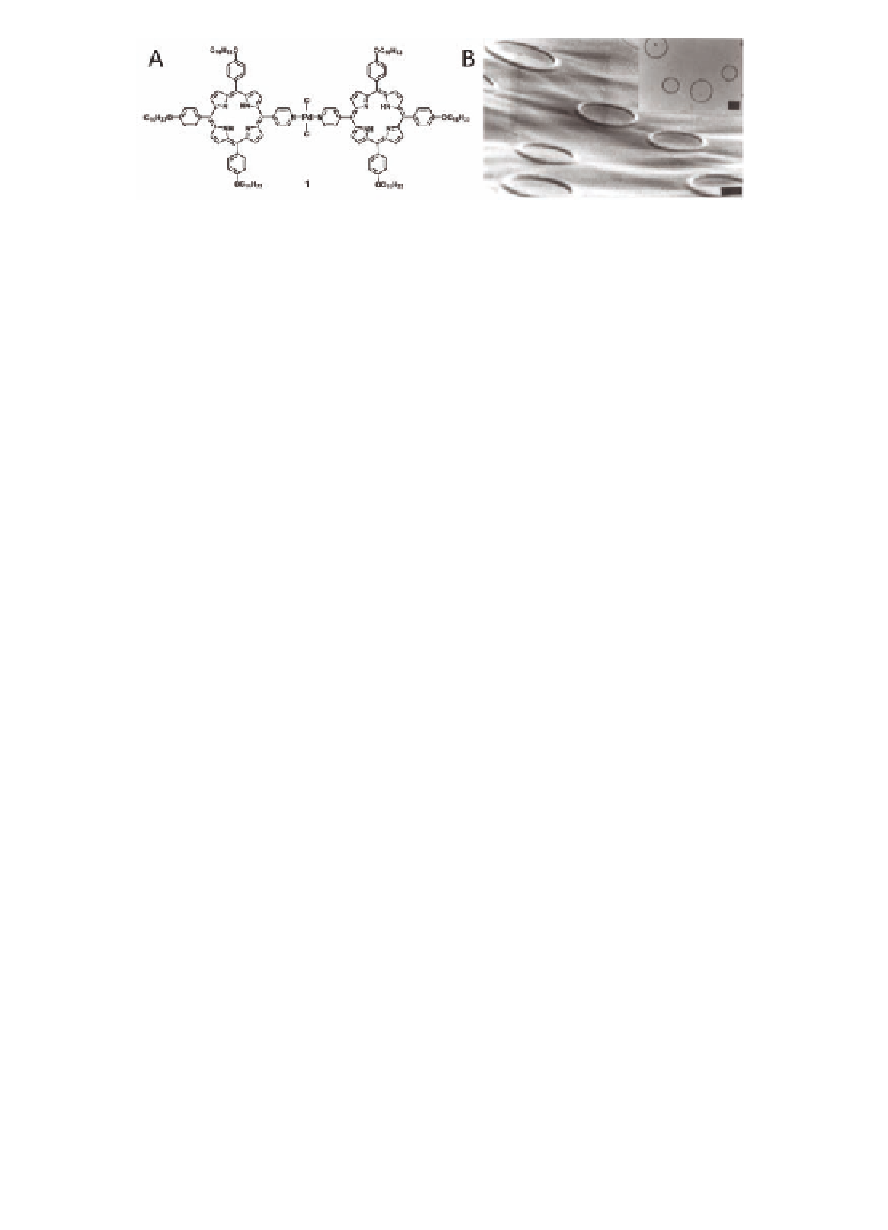Biology Reference
In-Depth Information
Figure 8.1
(A) Molecular structure of porphyrin dimer
. (B) Scanning
electron micrograph and (inset) transmission electron
micrograph of the rings formed after evaporation of a
chloroform solution of
1
1
on a carbon-coated copper grid. The
µ
bars represent 1
m. Copyright American Chemical Society,
1996.
The size of the rings could be tuned by varying the concentration
of the solution, and the temperature at which ring formation
process takes place. For example, when the solution droplets were
evaporated at 60
°
C, very large rings with average diameters of 50
µ
m were formed. Also the nature of the solvent appeared to be very
important for ring formation. In THF, toluene, or methanol, no ring
formation was observed, and when the solvent was changed from
carbon tetrachloride to chloroform to dichloromethane, solvents
with decreasing boiling points, the rings became progressively
less well defined. In general, the evaporation of solutions in which
the porphyrin molecules already were aggregated before their
evaporation did not result in the formation of rings. This indicates
that it is important that the porphyrins are molecularly dissolved,
so that the ring-like structures are only formed at the moment the
solvent evaporates. In that case, the structure of the final assemblies
is not determined by the structure of the aggregates in the solution
(vide infra). Electron diffraction studies indicated that the internal
structure of the rings was rather amorphic. Polarized NSOM studies
confirmed this by showing the presence of ordered structures at the
nanometre scale, which were, however, randomly oriented in the
rings.
The formation of the well-defined rings is proposed to occur
according to a so-called 'pinhole-mechanism', which is a combined
process of molecular self-assembly and physical wetting/dewetting
phenomena (Fig. 8.2). When an evaporating solution film becomes
sufficiently thin, pinholes, in which the surface is in contact with
air, can nucleate. At the edges of these pinholes, the rate of solvent

Search WWH ::

Custom Search